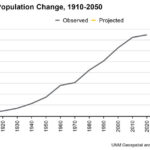What Language Do They Speak In Mexico? Spanish is the primary language spoken in Mexico, a vibrant and diverse country, and at gaymexico.net, we want to help you navigate the linguistic landscape. While Spanish is dominant, Mexico boasts a rich tapestry of indigenous languages, reflecting its deep cultural heritage. This guide explores the languages of Mexico, offering insights for LGBTQ+ travelers and those interested in Mexican culture, ensuring a welcoming and informed experience. Dive in to discover the linguistic diversity and cultural richness of Mexico, with tips for safe and enjoyable travel, and connect with the LGBTQ+ community through our platform.
1. What Is The Official Language Of Mexico?
While Spanish is the de facto national language of Mexico, it doesn’t have an official language at the federal level. However, Mexico recognizes 68 national languages, including Spanish and 67 indigenous languages. In 2003, the Mexican Congress approved the General Law of Linguistic Rights of the Indigenous People, granting all indigenous languages the same status as Spanish. This recognition underscores Mexico’s commitment to preserving its rich cultural and linguistic heritage.
1.1 Why Does Mexico Recognize So Many Languages?
Mexico’s recognition of 68 national languages stems from its dedication to preserving its rich indigenous heritage and cultural diversity. The General Law of Linguistic Rights of the Indigenous People, enacted in 2003, ensures that indigenous languages have the same legal standing as Spanish. This law acknowledges the historical importance and cultural value of these languages, promoting their use and preservation in various aspects of public life, including education and government. This inclusive approach reflects Mexico’s commitment to valuing and protecting the linguistic rights of its diverse population.
1.2 How Many Different Languages Are There in Mexico In Total?
Including dialects and variations, Mexico is home to around 345 languages. However, many of these languages are endangered, with over 130 having disappeared due to lack of use. The Mexican government has implemented measures to preserve these languages and the cultures they represent.
2. Why Is Spanish Mexico’s Most Spoken Language?
Spanish became the dominant language in Mexico due to the Spanish conquest led by Hernán Cortés in the early 16th century. The fall of the Aztec Empire marked the beginning of Spanish rule, leading to a long period of colonization. During this time, Spanish gradually became the primary language used in government, education, and commerce, supplanting many indigenous languages. Despite the persistence of indigenous languages, Spanish remains the most widely spoken language, a legacy of the colonial era.
2.1 The Impact Of Colonialism On Mexican Languages
The Spanish colonization had a profound and lasting impact on the languages spoken in Mexico. As Spanish colonizers established their rule, they imposed their language and culture on the indigenous population. This led to the decline of many indigenous languages, as Spanish became the language of power, education, and social mobility. While some indigenous languages managed to survive, they often did so in marginalized communities, facing ongoing pressure from the dominance of Spanish. The linguistic landscape of Mexico today is a direct result of this historical power dynamic.
2.2 The Enduring Legacy Of Indigenous Cultures
Despite the dominance of Spanish, the legacy of indigenous cultures in Mexico is still evident in many ways. Pre-Columbian ruins like the Mayan Pyramids and the Aztec city of Teotihuacán stand as testaments to the advanced civilizations that once thrived in the region. Indigenous words and traditions have also been incorporated into everyday Mexican life, enriching the country’s cultural tapestry. This blend of indigenous and Spanish influences creates a unique and vibrant cultural identity that distinguishes Mexico from other Latin American countries.
 Mayan ruins in Mexico, showcasing the rich indigenous history
Mayan ruins in Mexico, showcasing the rich indigenous history
3. What Are The Top 3 Languages Spoken In Mexico?
The top 3 languages spoken in Mexico are Spanish, Nahuatl, and Yucatec Maya. Spanish is spoken by approximately 94% of the population, making it the most prevalent language. Nahuatl, the language of the Aztecs, has over 1.7 million speakers, while Yucatec Maya, one of the oldest languages in the country, is spoken by around 850,000 people.
3.1 Spanish: The Predominant Language
Spanish is the primary language in Mexico, spoken by the vast majority of the population. It is used in government, education, media, and commerce, making it essential for daily life. While Mexican Spanish has its unique characteristics and variations, it is mutually intelligible with other dialects of Spanish spoken around the world. This widespread use of Spanish facilitates communication and integration across different regions of Mexico and beyond.
3.2 Nahuatl: The Language Of The Aztecs
Nahuatl, the language of the ancient Aztec civilization, holds significant historical and cultural importance in Mexico. Despite the decline of the Aztec Empire, Nahuatl has survived and continues to be spoken by over a million people in central Mexico. Efforts are underway to preserve and promote the language, recognizing its role in shaping Mexican identity. The presence of Nahuatl demonstrates the enduring legacy of indigenous cultures in the country.
3.3 Yucatec Maya: An Ancient Language
Yucatec Maya is one of the oldest and most widely spoken indigenous languages in Mexico, primarily in the Yucatán Peninsula. With a history dating back to 200 AD, Yucatec Maya is deeply rooted in the region’s cultural heritage. The language is still used in daily life, traditional ceremonies, and local governance. Efforts to revitalize Yucatec Maya include bilingual education programs and cultural preservation initiatives, ensuring its continued survival for future generations.
4. Is English Spoken In Mexico?
Yes, English is spoken in Mexico, particularly in tourist areas and northern regions. Approximately 10% of the population has some level of English proficiency. In cities like Mexico City, and tourist destinations like Cancun and San Miguel de Allende, many people are fluent in English.
4.1 English Proficiency In Tourist Areas
In tourist areas like Cancun, Playa del Carmen, and Puerto Vallarta, English is widely spoken and understood. Many locals working in the tourism industry, such as hotel staff, tour guides, and restaurant servers, are proficient in English to cater to international visitors. This makes it easier for English-speaking travelers to navigate these areas and enjoy their vacation without significant language barriers. However, venturing outside these tourist hotspots may require some basic Spanish language skills.
4.2 English As A Prerequisite For Employment
In Mexico City and other major urban centers, English proficiency is often a prerequisite for employment, particularly in industries such as tourism, hospitality, and international business. Many companies require their employees to have a certain level of English fluency to communicate with international clients and partners. This demand for English speakers has led to the growth of language schools and English language training programs in these cities.
5. Mexican Spanish Vs Spanish In Spain Or Latin America
Mexican Spanish is a variation of the Spanish language with its own unique characteristics. While it is mutually intelligible with Spanish spoken in Spain and other Latin American countries, there are notable differences in pronunciation, vocabulary, and idiomatic expressions.
5.1 Pronunciation Differences
One of the most noticeable differences in pronunciation between Mexican Spanish and Spanish spoken in Spain is the “seseo” versus “ceceo.” In Mexican Spanish, the sounds represented by the letters “s,” “z,” “ce,” and “ci” are all pronounced the same, like the “s” in “sun.” In contrast, in Spain, the “z,” “ce,” and “ci” are pronounced with a “th” sound, similar to the “th” in “thin.” This difference can be confusing for learners of Spanish, but with practice, it becomes easier to distinguish between the two pronunciations.
| Spanish Word | Mexico | Spain |
|---|---|---|
| Gracias (thank you) | /gra-see-as/ | /gra-thee-as/ |
| Cerveza (beer) | /ser-ve-sa/ | /ther-ve-tha/ |
| Ciudad (city) | /siu-dad/ | /thiu-dad/ |
5.2 Vocabulary Variations
Mexican Spanish has its own unique vocabulary, with many words and phrases that are not used in Spain or other Latin American countries. These vocabulary differences can sometimes lead to misunderstandings or confusion, but they also add to the richness and diversity of the Spanish language. For example, the word for “computer” in Mexico is “computadora,” while in Spain, it is “ordenador.”
| English | Mexico | Spain |
|---|---|---|
| Computer | Computadora | Ordenador |
| Pen | Pluma | Bolígrafo |
| You (plural) | Ustedes | Vosotros/as |
5.3 Slang And Idiomatic Expressions
Mexican Spanish is full of slang and idiomatic expressions that are unique to the country. These expressions often reflect Mexican culture, humor, and history. Learning some of these slang terms can help you better understand and connect with locals. For instance, “chido” is a common slang word in Mexico that means “cool” or “awesome.”
6. Mexican Spanish Tells A History
Mexican Spanish is more than just a language; it’s a living testament to Mexico’s rich history and cultural heritage. As one of the most polite and easy-to-understand dialects in Latin America, Mexican Spanish reflects the country’s unique blend of indigenous and Spanish influences. Its vocabulary, pronunciation, and idiomatic expressions all tell a story of cultural exchange, historical events, and the ongoing evolution of the Mexican identity.
6.1 Influence Of Indigenous Languages On Mexican Spanish
Mexican Spanish has been significantly influenced by the indigenous languages spoken in the country, particularly Nahuatl, the language of the Aztecs. Many words and phrases in Mexican Spanish have Nahuatl origins, reflecting the enduring legacy of indigenous cultures in Mexico. For example, the word “chocolate” comes from the Nahuatl word “xocolatl.” This linguistic influence demonstrates the deep connection between Mexican Spanish and the country’s indigenous roots.
6.2 Borrowing Of English Words
In addition to indigenous influences, Mexican Spanish has also borrowed words from English, particularly in modern times. This phenomenon, known as “Spanglish,” is common in many Spanish-speaking countries, but it is particularly prevalent in Mexico due to its proximity to the United States. Words like “troca” (truck), “computadora” (computer), and “email” have been incorporated into Mexican Spanish, reflecting the cultural and economic ties between Mexico and the United States.
 Mexican couple practicing Spanish, highlighting cultural connections
Mexican couple practicing Spanish, highlighting cultural connections
7. LGBTQ+ Considerations When Traveling To Mexico
Mexico is becoming increasingly LGBTQ+ friendly, but it’s essential to be aware of local customs and laws. While major cities like Mexico City and Puerto Vallarta are known for their welcoming atmosphere, attitudes in more rural areas can be conservative. Researching LGBTQ+ resources and support networks can enhance your travel experience.
7.1 LGBTQ+ Friendly Destinations
Mexico City, Puerto Vallarta, and Cancun are well-known for being LGBTQ+ friendly destinations. These cities offer a variety of gay bars, clubs, hotels, and cultural events. Mexico City has a vibrant LGBTQ+ scene, with numerous gay-friendly neighborhoods and annual Pride celebrations. Puerto Vallarta is often referred to as the “San Francisco of Mexico” due to its large LGBTQ+ population and welcoming atmosphere. Cancun, while primarily known as a tourist destination, also has several gay-friendly resorts and activities.
7.2 Laws And Social Attitudes
While Mexico has made progress in LGBTQ+ rights, it’s important to be aware of the laws and social attitudes in different regions. Same-sex marriage is legal in all 32 states, but attitudes towards LGBTQ+ individuals can vary. In more conservative areas, public displays of affection may attract unwanted attention. It’s advisable to exercise caution and respect local customs.
7.3 Resources And Support Networks
Several LGBTQ+ resources and support networks can help you plan a safe and enjoyable trip to Mexico. Organizations like All Mexico LGBT and Gay Mexico provide information on LGBTQ+ friendly destinations, events, and businesses. Additionally, online forums and social media groups can connect you with other LGBTQ+ travelers and locals who can offer advice and support.
8. Tips For Learning Basic Spanish Phrases
Learning a few basic Spanish phrases can greatly enhance your travel experience in Mexico. Knowing how to say hello, thank you, and ask for directions can help you connect with locals and show respect for their culture.
8.1 Essential Phrases For Travelers
- Hola (Hello)
- Gracias (Thank you)
- Por favor (Please)
- ¿Cómo está? (How are you?)
- ¿Dónde está…? (Where is…?)
- ¿Cuánto cuesta? (How much does it cost?)
- No hablo español (I don’t speak Spanish)
- ¿Habla inglés? (Do you speak English?)
- Un baño, por favor (A bathroom, please)
- Ayuda (Help)
8.2 Language Learning Apps And Resources
Many language learning apps and resources can help you learn basic Spanish phrases. Duolingo, Babbel, and Memrise are popular apps that offer interactive lessons and vocabulary exercises. Online dictionaries like WordReference and SpanishDict can help you look up words and phrases. Additionally, YouTube channels like Easy Spanish offer free Spanish lessons and cultural insights.
8.3 Immersing Yourself In The Language
One of the best ways to learn Spanish is to immerse yourself in the language. Watch Spanish-language movies and TV shows, listen to Spanish music, and try to practice speaking with native speakers. Even if you make mistakes, don’t be afraid to try. Locals will appreciate your effort to learn their language.
9. How Can Gaymexico.Net Help You Plan Your Trip?
Gaymexico.net is your ultimate resource for planning an unforgettable LGBTQ+ trip to Mexico. We provide comprehensive guides to LGBTQ+ friendly destinations, events, and businesses. Our platform offers up-to-date information on LGBTQ+ rights, laws, and social attitudes in Mexico, ensuring a safe and informed travel experience.
9.1 LGBTQ+ Travel Guides
Our LGBTQ+ travel guides offer detailed information on the best destinations in Mexico for LGBTQ+ travelers. We provide recommendations for gay-friendly hotels, bars, clubs, and restaurants, as well as tips on local customs and etiquette. Whether you’re looking for a relaxing beach vacation, a cultural adventure, or a vibrant nightlife scene, our travel guides can help you plan the perfect trip.
9.2 Event Listings And Community Connections
Gaymexico.net features a comprehensive listing of LGBTQ+ events and festivals happening throughout Mexico. From Pride celebrations to film festivals to cultural events, we keep you informed about the latest happenings in the LGBTQ+ community. Our platform also allows you to connect with other LGBTQ+ travelers and locals, sharing experiences and building friendships.
9.3 Safety Tips And Resources
Your safety and well-being are our top priorities. Gaymexico.net provides safety tips and resources for LGBTQ+ travelers in Mexico. We offer information on local laws, customs, and social attitudes, as well as advice on how to avoid potential risks. Our platform also connects you with LGBTQ+ support networks and organizations that can provide assistance if needed.
10. Exploring Mexico: A Call To Adventure
Mexico offers a wealth of cultural and linguistic diversity, making it an exciting destination for LGBTQ+ travelers. By learning about the languages spoken in Mexico and understanding local customs, you can create a more meaningful and enriching travel experience.
10.1 Embrace The Culture
Take the time to explore Mexico’s rich cultural heritage. Visit ancient ruins, attend traditional festivals, and sample local cuisine. Learn about the history, art, and music of Mexico. By immersing yourself in the culture, you’ll gain a deeper appreciation for the country and its people.
10.2 Connect With The Community
Connect with the LGBTQ+ community in Mexico. Attend local events, visit gay bars and clubs, and meet other LGBTQ+ travelers and locals. Share your experiences and learn from others. By building connections, you’ll create lasting memories and gain a better understanding of LGBTQ+ life in Mexico.
10.3 Plan Your Trip With Gaymexico.Net
Visit gaymexico.net to discover more about LGBTQ+ travel in Mexico. Explore our destination guides, event listings, and community resources. Contact us today to start planning your dream vacation and experience the beauty and diversity of Mexico!
 Celebrating Pride in Mexico, showcasing LGBTQ+ inclusivity
Celebrating Pride in Mexico, showcasing LGBTQ+ inclusivity
Ready to explore the vibrant and welcoming world of LGBTQ+ Mexico? Visit gaymexico.net today to discover comprehensive travel guides, find exciting events, and connect with a thriving community. Whether you’re seeking a relaxing getaway or an adventurous exploration, gaymexico.net is your trusted resource for planning an unforgettable trip. Don’t wait – start your Mexican adventure now and experience the beauty, diversity, and warmth of this incredible country! You can find us at 3255 Wilshire Blvd, Los Angeles, CA 90010, United States or call us at +1 (213) 380-2177.
Frequently Asked Questions (FAQ)
1. Is Spanish the only language spoken in Mexico?
No, while Spanish is the most widely spoken language, Mexico recognizes 68 national languages, including 67 indigenous languages.
2. Do I need to speak Spanish to travel in Mexico?
While it’s not essential, knowing basic Spanish phrases can greatly enhance your travel experience, especially outside of tourist areas.
3. Is English widely spoken in Mexico?
English is spoken in tourist areas and major cities, but proficiency varies.
4. What is the most LGBTQ+ friendly city in Mexico?
Puerto Vallarta is often considered the most LGBTQ+ friendly city, followed by Mexico City and Cancun.
5. Are same-sex marriages legal in Mexico?
Yes, same-sex marriage is legal in all 32 states of Mexico.
6. How can I find LGBTQ+ events in Mexico?
Visit gaymexico.net for comprehensive listings of LGBTQ+ events and festivals throughout Mexico.
7. What are some essential Spanish phrases for travelers?
Essential phrases include “Hola” (Hello), “Gracias” (Thank you), and “¿Dónde está…?” (Where is…?).
8. Is Mexico a safe destination for LGBTQ+ travelers?
Major cities are generally safe, but it’s important to be aware of local customs and exercise caution in more conservative areas.
9. What resources are available for LGBTQ+ travelers in Mexico?
Organizations like All Mexico LGBT and Gay Mexico provide valuable information and support.
10. How can Gaymexico.net help me plan my trip?
gaymexico.net offers LGBTQ+ travel guides, event listings, community connections, and safety tips to ensure a memorable and safe trip.
